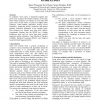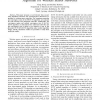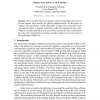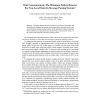3356 search results - page 12 / 672 » Determining Consensus Numbers |
ICARCV
2002
IEEE
14 years 14 days ago
2002
IEEE
In computer vision tasks, it frequently happens that gross noise occupies the absolute majority of the data. Most robust estimators can tolerate no more than 50% gross errors. In ...
GLOBECOM
2008
IEEE
14 years 2 months ago
2008
IEEE
Abstract—This paper proposes a novel discrete time secondorder distributed consensus time synchronization (SO-DCTS) algorithm for wireless sensor networks. The consensus properti...
DC
2006
13 years 7 months ago
2006
Abstract. Paxos and Fast Paxos are optimal consensus algorithms that are simple and elegant, while suitable for efficient implementation. In this paper, we compare the performance ...
BIOINFORMATICS
2010
13 years 7 months ago
2010
DNA copy number variants (CNV) are gains and losses of segments of chromosomes, and comprise an important class of genetic variation. Recently, various microarray hybridization ba...
WDAG
2009
Springer
14 years 1 days ago
2009
Springer
This paper defines the basic notions of local and non-local tasks, and determines the minimum information about failures that is necessary to solve any non-local task in message-p...




